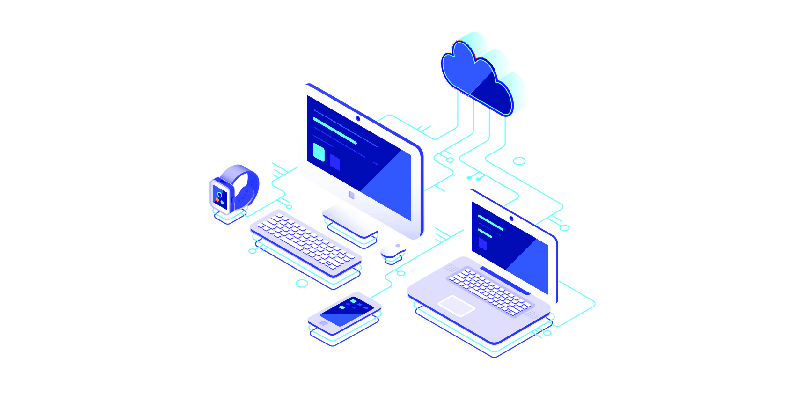- AI

Artificial Intelligence

Smart Products & Services
We follow Smart Products & Services

Intelligent Business Functions & Processes
We follow Intelligent Business Functions & Processes

Robotic Process Automation
We follow Robotic Process Automation

Personalized
healthcareWe follow Personalized healthcare

Identifying at-risk patients
We follow Identifying at-risk patients

Optimized routing and scheduling
We follow Optimized routing and scheduling
- ML

Machine Learning

Predictive
AnalyticsWe follow Predictive Analytics

Service Personalization
We follow Service Personalization

NLP
We follow NLP (Natural Language Processing)

Stock Market Forecasting
We follow Stock Market Forecasting

Fraud Prevention
We follow Fraud Prevention

Recommender engines
We follow Recommender engines
- blockchain

Blockchain

Public Blockchain
We follow Public Blockchain

Private Blockchain
We follow Private Blockchain

DEFI
We follow DEFI Blockchain

Initial stake pool offering development
We follow initial stake pool offering development
- IOT

Internet of Things
- AR
- Business Solutions

Business Solution

Business Performance Management
We follow Business Performance Management

Decision Making & Big Data Analytics
We follow Decision Making & Big Data Analytics

Enterprise Data Management
We follow Enterprise Data Management
- Apps

Apps

Native Apps
We follow Native Apps

Cross Platform Apps
We follow Cross Platform Apps

Web Apps
We follow Web Apps

Hybrid Apps
We follow Hybrid Apps

Cloud Native Apps
We follow Cloud Native Apps
- Lab

Stimulate Innovation with Cloud-Native Applications: A Paradigm Shift in Software Development
You can use cutting-edge technologies and methods to follow today’s digital world. These include cloud computing, AI, IoT, blockchain, edge computing, agile development, DevOps, and continuous integration/continuous delivery (CI/CD).
One trend that is taking over the IT business is the cloud-native apps. With these new technologies have become the engine of creativity. Using them, organizations can now reach their full potential in the cloud ecosystem, which is constantly growing.
In this blog, Sky Potential US, the best Native app development company, will discuss cloud-native apps. And how they change businesses. Get ready to join the cloud-native revolution and change the digital infrastructure of your business.
What Precisely Is A Cloud-Native Application?

A cloud-native application is a type of software that is purpose-built for cloud computing environments. Companies create them with cloud-native principles in mind. You can take full advantage of cloud platforms’ capabilities and benefits.
Cloud-native applications use a microservices architecture. They break down the application into smaller, independent components known as microservices. You can develop, deploy and scale independently these microservices allowing for greater flexibility and agility.
Cloud-Native Applications Features
In a cloud-native app design, containers put together microservices and communicate with each other through APIs. Orchestration tools handle each of these parts.
Here are some of the most essential features of these apps:
- Microservices-Based. A program can be split into several separate services or modules with microservices. Each service has its data and helps a different business goal. APIs, or application program interfaces, let these sections talk to each other.
- Container-Based. Containers separate an application’s code from its physical resources, allowing it to work independently. Containers make it so that microservices can’t mess with each other. They ensure that apps avoid using up all of the shared resources of the site. Additionally, containers enable running multiple instances of the same service efficiently.
- API-Based. APIs connect containers and microservices and make management and security more accessible. They act as a link between services that are only loosely linked, letting microservices talk to each other.
- Dynamically orchestrated. Orchestration of containers are tools that handle lifecycles, which can be hard to keep track of. Container orchestration technologies take care of the provisioning and deployment of containers on server cluster nodes. They also take care of resource management, load sharing, and scheduling restarts. But when there is an internal failure and scheduling deployments of containers.
Four Basic Rules Of Cloud-Native Development

Here are the four primary rules of cloud-native development:
- Microservices: The microservices architecture involves creating a group of modular parts or services that comprise an extensive program.
- Containerization: The process of putting together and virtually separating applications deployment with a type of software called containers.
- Continuous delivery: In this approach, developers write and test code in short but continuous cycles.
- DevOps: It encourages teams to work together better and talk to each other more.
Turn your ideas into beautiful apps for mobile devices from Sky Potential mobile app development company! Choose our expert team of web app developers to get the best native and cross-platform app development services. Get in touch with us today to improve your online visibility.
Cloud-Based Apps Vs. Cloud-Native Apps
Cloud-Based apps are traditional apps that initially aim to run on local servers or data centers. Now uses the cloud for hosting purposes. Think of it as taking an existing app and putting it on the cloud without significant changes.
Cloud-Native apps are specifically for the cloud from the ground up. These apps are easy to adapt and can handle a lot of work. They can work smoothly in the cloud environment. Cloud-native apps are flexible and scalable. They exist to work seamlessly in the cloud environment.
Cloud-based apps are similar to moving an existing app to the cloud. In contrast, cloud-native apps are built specifically for the cloud. In architectural choices, monolithic architecture is associated with traditional applications (cloud-based and cloud-native applications). In contrast, microservices architecture aligns more with cloud-native applications.
Cloud-Native Applications’ Benefits
“Cloud-native” apps can function effectively in the cloud environment right from the start. Here are a few reasons why you should hire them:
- Money Ease. There are computing and storage tools that can grow as needed. Because of this, there is no longer a need to spread out the work or have too much hardware. You can set up Cloud-native apps quickly and test them by adding virtual servers. To save time, money, and resources, you can improve the app numbers on a host via containers.
- Independently scalable. Each microservice is conceptually separate and can scale up or down independently. If one microservice is grown differently, it won’t affect the others. A cloud-native design allows updating certain parts of an app more quickly than others when necessary.
- Portability. Cloud-native apps are vendor-neutral. They leverage containers to actively move microservices between multiple suppliers’ infrastructures to avoid vendor lock-in. These apps actively collaborate with any vendor.
- Reliable. Cloud-based apps use containers, so if one microservice breaks, it doesn’t affect the other services close.
- Easy to work with. In cloud-native apps, you can send features and changes through automation. As upgrades are made to components and microservices, writers actively track all of them. Applications are broken up into more minor services. So that one technical team can work on a single microservice without thinking. It shows how it will work with other microservices.
- Visibility. Since a microservice design keeps services separate, it’s easier for engineering teams to study apps. And even figure out how they work together.
Best Practices To Create Cloud-Native Apps

Operational excellence is a principle of DevOps. It forms the basis of the best ways to make cloud-native apps. There are no set rules for the cloud-native design. Businesses will develop differently based on the business problem they are trying to solve and the software they use.
All designs for cloud-native apps should consider the app creation process and performance measurement. And how teams will support continuous development throughout the app’s lifecycle. There are five parts to design, which are:
- Automate. Automation allows multiple cloud vendors to set up cloud application environments regularly. Infrastructure as code (IaC) and automation monitor changes to a source code file.
- Monitor. The teams should monitor both application usage and the development process. The environment make it easy to keep track of everything, from the supporting infrastructure to the app.
- Document. Many teams are helping to make cloud-native apps. Even though they don’t know what other teams are working on. Documentation is needed to track changes and see how each team affects the app.
- Make a few minor changes. The app or its architecture must change slowly and in a manner that is easy to undo. Changes will help teams learn and keep them from making big mistakes. IaC lets developers keep track of changes made to a source repository.
- Make your plans fail. When things go wrong in the cloud, you can set up test frameworks. So you can reduce failures and learn from them.
Tools For Making Cloud-Native Apps

You require various software tools at each stage to build a cloud-native application. These tools collaborate to form a complete software stack for the application. The following software is part of a cloud-native programming stack:
- You can get the Docker software for free. A cloud-native app uses a control virtualized application container. It is a shared operating system (OS) to build and deploy. It keeps resources separate so containers can use the same OS without affecting each other.
- You can use the Kubernetes platform to control and orchestrate Linux containers facilitating the seamless execution of containerized applications.
- Terraform aims to apply IaC and specifies resources as code. It uses version control so that users can see when and where resources change over time.
- GitLab’s CI/CD. You can use this continuous integration/continuous development (CI/CD) program to automate the testing and deployment of software. GitLab is applicable for both static analysis and security analysis and also for unit testing.
- js. With the help of this JavaScript runtime, you can make real-time apps like chat, news feeds, and other microservices. Node.js, for example, can set up virtual servers. It provides the routes that connect microservices to APIs from outside the organization.
Conclusion
In recent years, cloud-native apps have become common and are the most important type of software. Cloud-native apps solve some of the problems that come with cloud computing. These issues enable rapid development and deployment cycles, avoid vendor lock-in, enhance resilience, etc.
But there are several challenges when moving to the cloud to improve operational efficiency. These include legacy system integration, data security, bandwidth restrictions, performance concerns, cost management, and skill gaps. A good migration requires careful planning, working as a team, and getting help from professionals.
So get careful experts and convert your image into actuality with our cutting-edge cloud-native or cross-platform mobile app development services! Partner with the leading native app development company today!

















































Leave a Reply